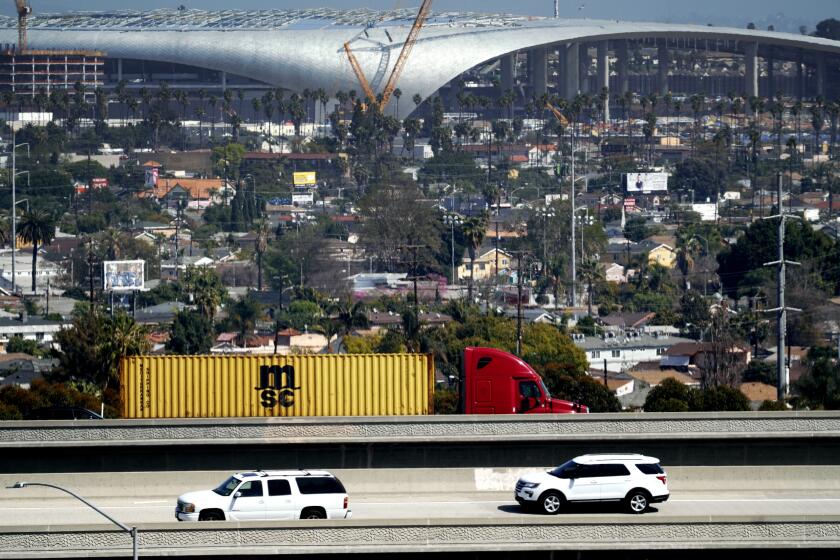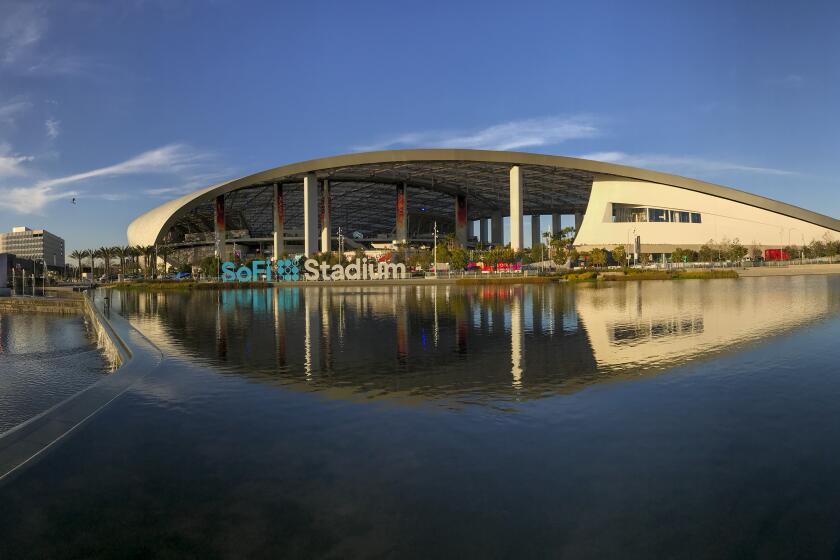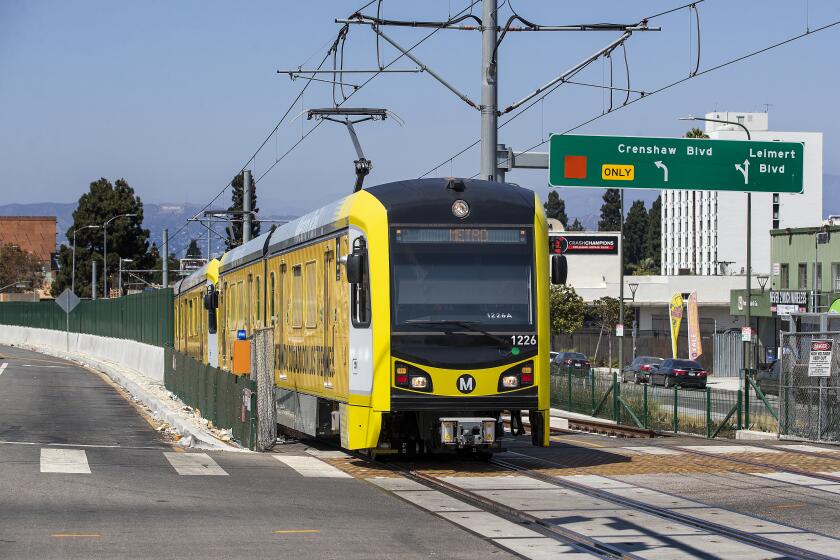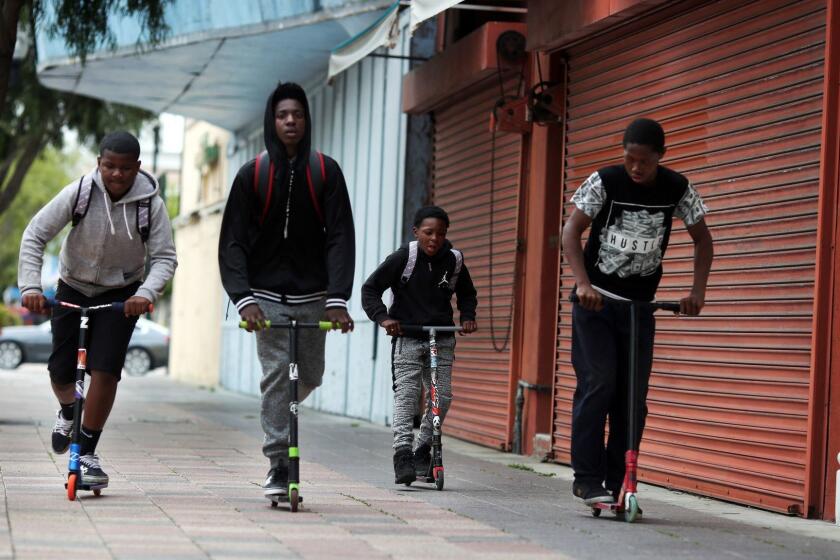Opinion: Inglewood’s people mover is at risk. It should be built
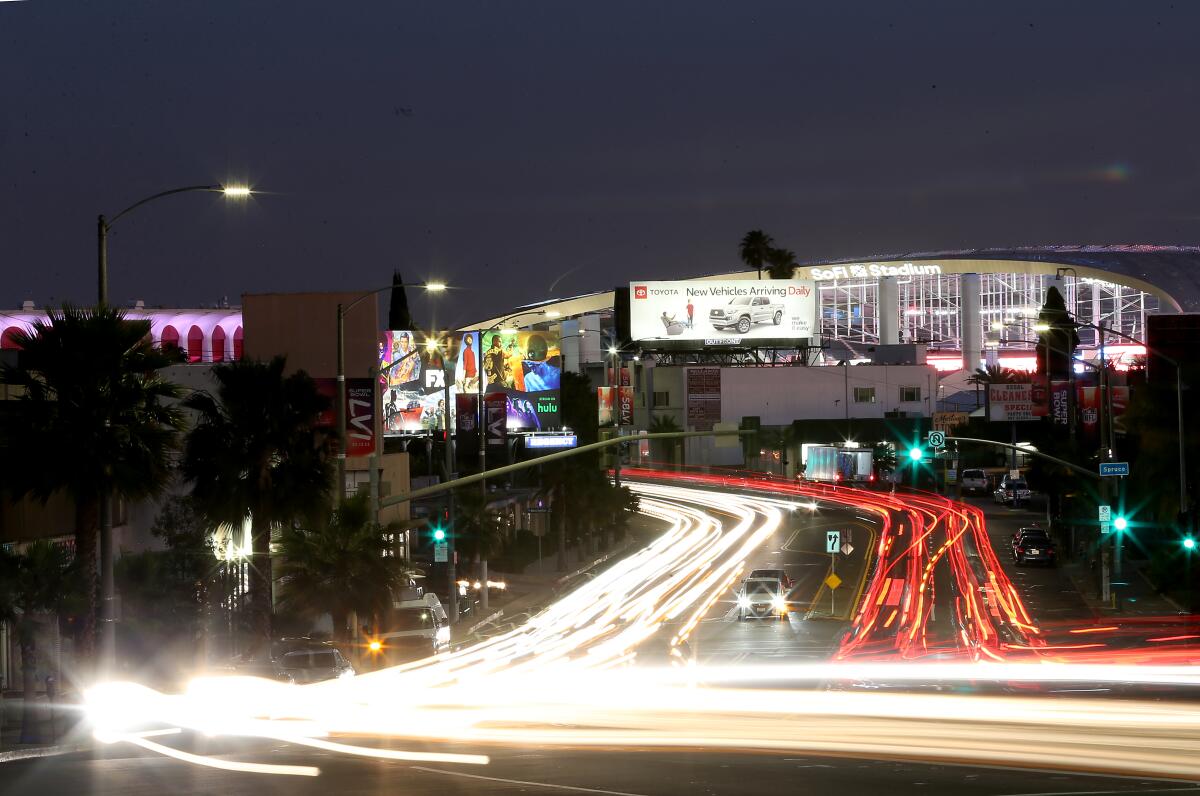
- Share via
There are few places in the country that understand a comeback like the city of Inglewood. When I became its mayor in 2011, this majority-minority city was on the verge of municipal bankruptcy, within six months of not making payroll.
Now its fiscal health is stabilized, and we’ve created thousands of prevailing wage jobs — the kind that are a gateway for home ownership and upward mobility. We’ve brought the NFL back to Southern California — the Rams and the Chargers play at Inglewood’s SoFi Stadium, where Taylor Swift packed the house on her Eras tour, and where LA28 will stage the opening and closing ceremonies of the Los Angeles Olympic Games in four years.
The lawmaker argues an elevated people mover — once touted as a marquee piece for the 2028 Olympic Games — won’t help those living in the community.
The city’s comeback required tough negotiations with partners. We worked with private investors and developers to build SoFi and the surrounding Hollywood Park mixed-use housing, office and entertainment complex. A separate city and private investment brought us the renovated Kia Forum, once again one of the nation’s top concert venues, and the brand-new Intuit Dome is the home of the Clippers and will host Usher in September and Bruno Mars in August.
Next year, the three venues collectively will host 400 events, attract over 5 million attendees and continue to provide Inglewood with a strong and steady tax base.
But the comeback is not yet complete. The same venues that bring a multitude of benefits to Inglewood bring a multitude of transportation challenges as well.
SoFi Stadium boosters want to stoke the narrative that Inglewood’s giant shiny new object ensures a bright future for the city. But at what costs?
Parking fees for the sporting events and concerts at the new stadiums can range as high as $50 to $100. On event days, some parts of town are all but closed off to residents, who must take alternate routes to do basic errands or get to and from work. Local businesses miss out on sales to regular customers who won’t contend with event-related traffic.
The observation that people are driving to these events should come as no surprise. Historically, Inglewood has been woefully underserved by transit alternatives. Adjacent to two freeways (and under the LAX flight path), the city has also been disproportionately burdened by car traffic, noise and air pollution.
Our first Metro rail line, the K line, finally became fully operational only last year. The downtown K line station, at Florence near Market, is the closest Metro train to the new venues, but it is still nearly two miles away, a 30- to 40-minute walk. Shuttle buses are used for some events, but they too get stuck in traffic. The “first/last mile gap” tends to discourage Inglewood visitors and locals from using the transit system.
Inglewood wants to believe that SoFi Stadium and Hollywood Park represent Black uplift, not just gentrification. But history is against it.
Inglewood and Los Angeles deserve better, and once again partnerships will make it happen. After extensive planning and coordination within the community, with the venue operators and with LA Metro, we agreed that the best solution was to add a connector to the K line — three new stations that will take people directly to and from the Florence station and the new sports, entertainment and retail district.
The Inglewood Transit Connector’s ridership projections, cost effectiveness and its proposed elevated path through the city have been vetted by the South Bay Cities Council of Governments, the California State Transportation Agency and the Federal Transit Administration. Thanks to the Biden/Harris administration and the support of Sen. Alex Padilla (D-Calif.) and Gov. Gavin Newsom, we are on track to secure close to $2 billion in federal, state and local funding to advance the connector — an unprecedented accomplishment for a city of approximately nine square miles and 107,000 residents.
While the federal commitment is not finalized, officials say it signals the viability of an ambitious project they aim to open before the 2028 Olympics.
The Los Angeles County Economic Development Corporation estimates that the project will support 17,000 jobs, paying an aggregate of $868 million in wages, and an already executed workforce agreement requires the project to recruit locally, hire union workers and provide entry-level apprenticeships. The ITC will encourage the development of transit-oriented housing, reduce congestion, improve air quality and help the city do its part to tackle climate change. It will not displace a single resident; affected businesses will be reimbursed with relocation funds and other assistance.
At long last, Inglewood is on the cusp of transit equity and environmental justice. But not everyone sees this positive vision. U.S. Rep. Maxine Waters (D-Los Angeles), whose district includes Inglewood, last week partnered with the Republican majority to strike a portion of the connector’s federal funding from a House appropriations bill. However, the final budget requires reconciliation with the U.S. Senate, and Padilla worked across the aisle to advance funding for the project, an indicator of its continued viability. I hope the congresswoman will ultimately support this historic federal investment in Inglewood.
For the last couple of years I’ve been watching for clear signs of gentrification in Inglewood.
Los Angeles must build a transit system that gets people where they want and need to go; safely, affordably and efficiently. The connector will benefit Inglewood residents, all Angelenos and visitors for generations to come.
It should be built now.
James T. Butts is the four-term mayor of Inglewood and a member of the Metro Board of Directors.
More to Read
A cure for the common opinion
Get thought-provoking perspectives with our weekly newsletter.
You may occasionally receive promotional content from the Los Angeles Times.

